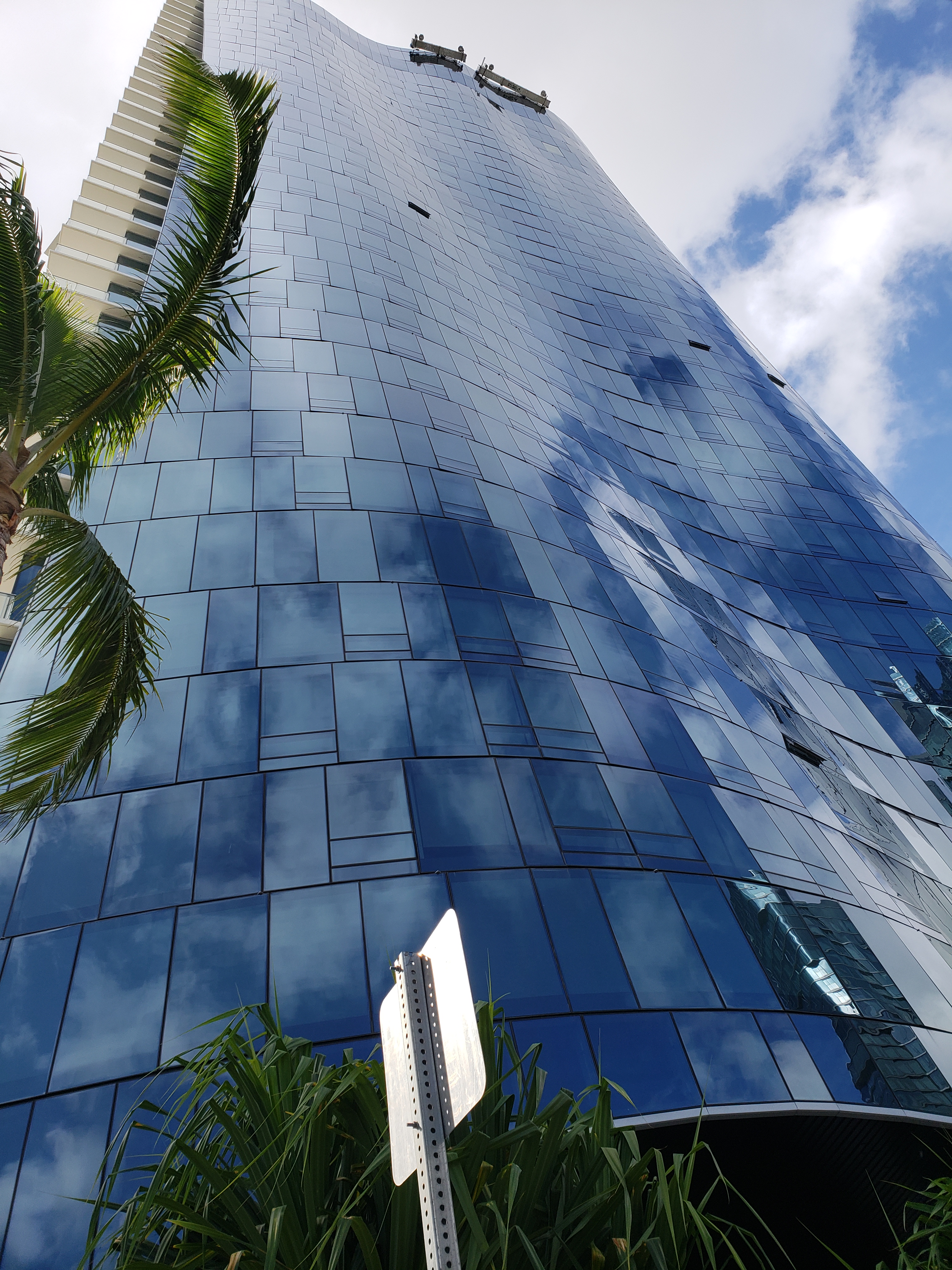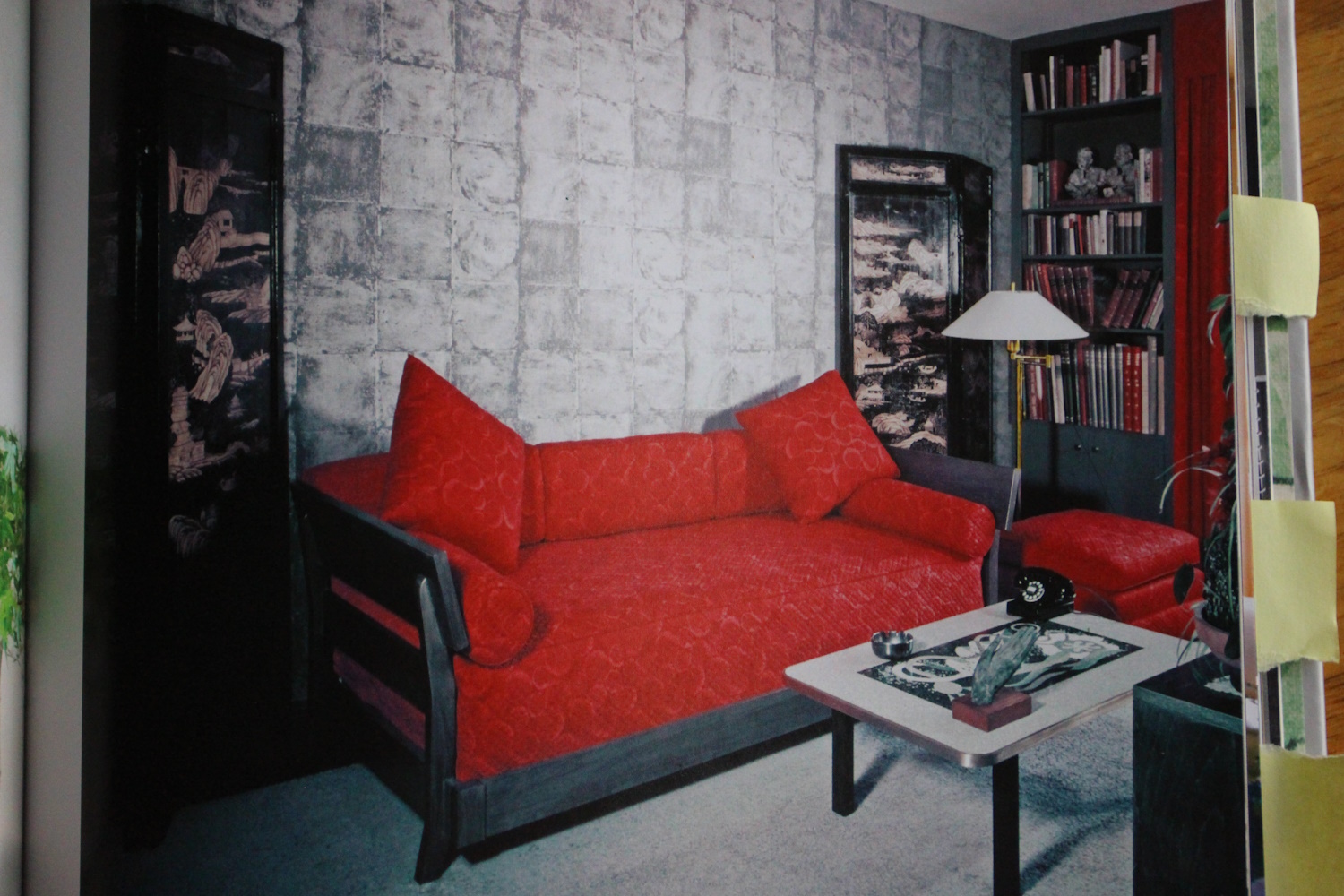 This is one of the newer buildings in Honolulu. It’s the Waiea building in Kakaako. And it’s one of the few buildings that I’ve seen that says water as much as wood. The wavy shape of the blue glass surface of this side of the building screams water.
This is one of the newer buildings in Honolulu. It’s the Waiea building in Kakaako. And it’s one of the few buildings that I’ve seen that says water as much as wood. The wavy shape of the blue glass surface of this side of the building screams water.
Not every side of the building looks like this. The repeated horizontal planes of the balcony floors on the other sides say earth, because horizontal is the shape for the feng shui element earth (think of looking at a flat horizon—that’s how the horizontal symbolism began). Because the horizontal balcony floors are repeated a lot they give more importance to the earth element. (You can see some of those horizontal balcony lines at the upper left corner of this image; there’s also a good photo on the building’s website that shows the whole thing, with a balcony side clearly visible.)
Waiea means “Water of Life” so that adds to the water element, as do the outside water features at the base of the building. Though the pools and waterfalls look elegant, they’re not great from a feng shui perspective. That’s because the building actually cantilevers out over the water feature, with the support of some (very) large round poles. (I covered cantilevering in my post on the Capitol building exterior and there’s a whole section called “Houses on Poles” in Feng Shui for Hawaii to explain why it’s bad and how to address it.)
Furthermore, the waterfalls surrounding the building all direct the water away from the building. I hope most folks know by now why that’s a bad idea—because water (representing wealth) is flowing away from the building—money leaving. Nothing that a few well-placed tiny mirrors couldn’t fix! If you need a refresher, start with my post on “Using Fountains Properly for Feng Shui” and also consult Feng Shui for Hawaii Gardens section “Pools and Ponds.”
The main silhouette that the building presents is of a vertical rectangle, and that represents wood. The importance of the silhouette comes from the length of time that the shape of the building can noticed after the sun goes down and before the sun comes up. The silhouette is noticeable for a longer length of time, and that matters a great deal in feng shui.
So for this building, the percentage of the elements is something like this:
- 40% water
- 40% wood
- 20% earth
Making a feng shui judgement about whether or not a particular building will enhance prosperity for the residents is an extremely complicated subject. I’m not going to attempt it in this article, and I may never attempt it in any book I write. It is literally the most complicated thing I do in feng shui. But I will say this: a water building that is close to a lot of actual water doesn’t usually benefit from the fact that the element is water. The best way I can describe it is that water part of the environment cannot feed the water part of the elemental symbolism.
Be sure to read Part 1 of this series on buildings (if you haven’t already) for more on determining a building’s element and what you might do in your decor if you live in a water building.
Leave a Comment Cancel Comment
Related Posts
Feng Shui & Exterior House Colors (Part 2)
Feng Shui & Dragon Imagery: Part One, Interiors
Curves & Waves & Angles, Oh My! — More Feng Shui Views of Big Buildings
Recent Posts
Three Famous Gay Men from Huntsville, Alabama

My Youtube Feng Shui Channel




Article Comments